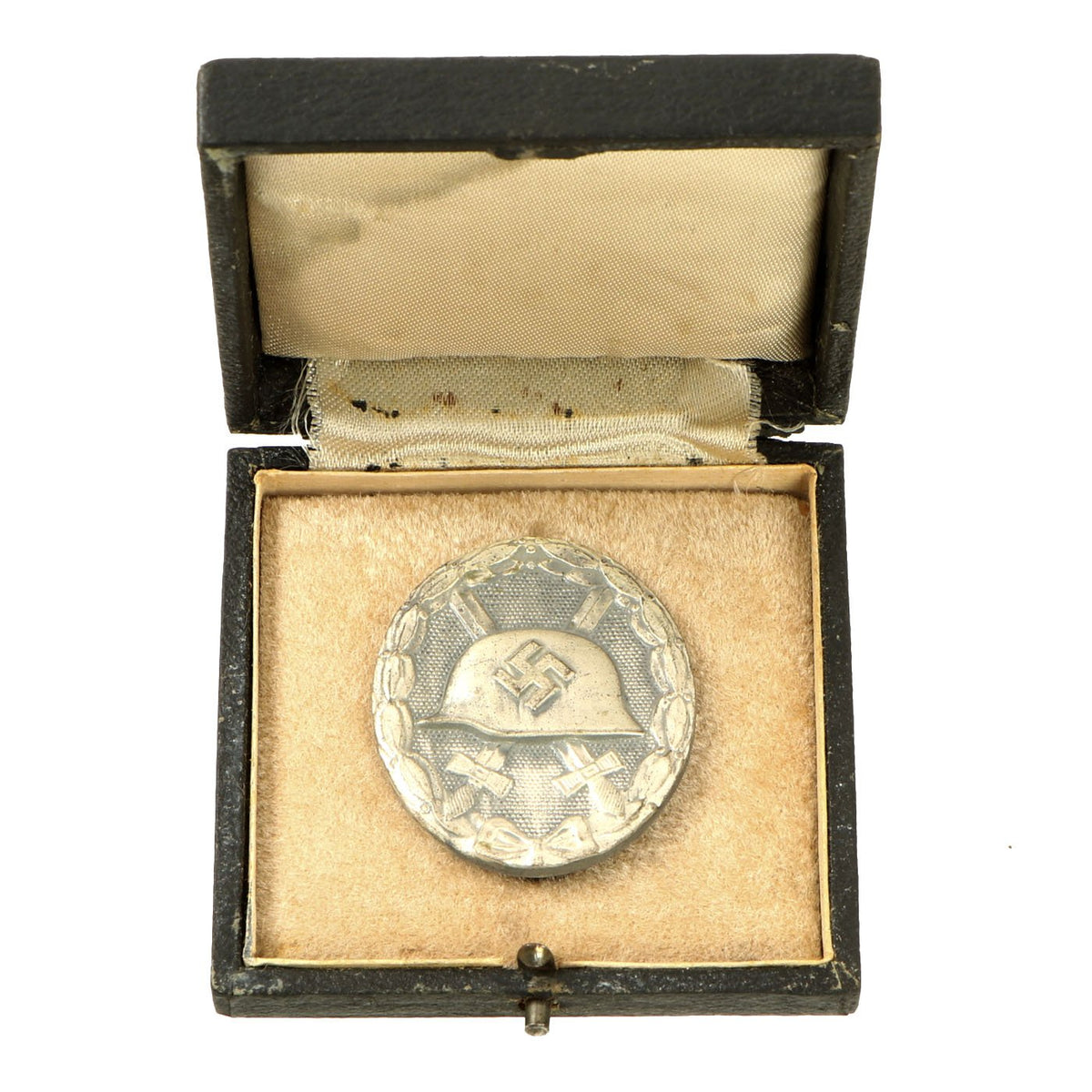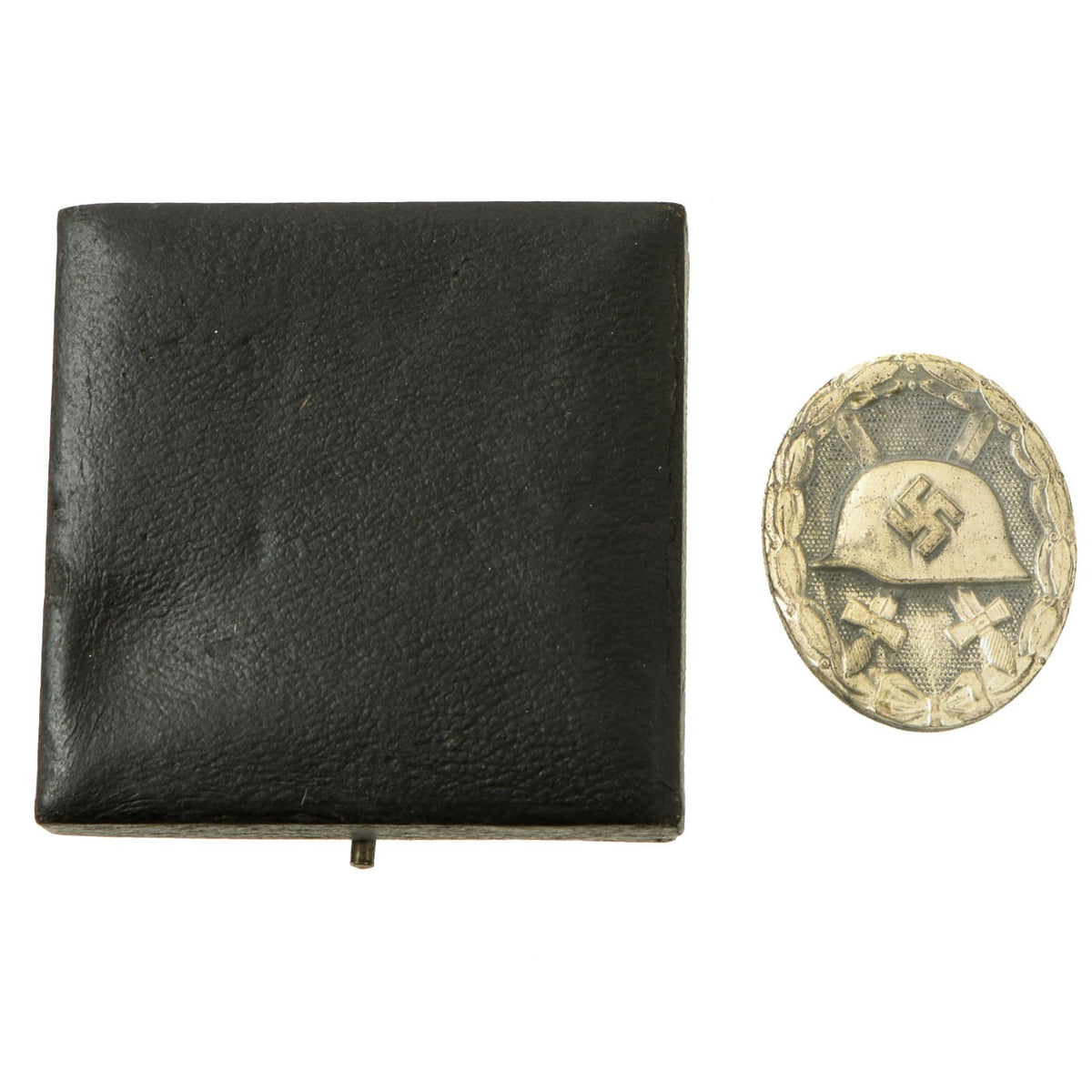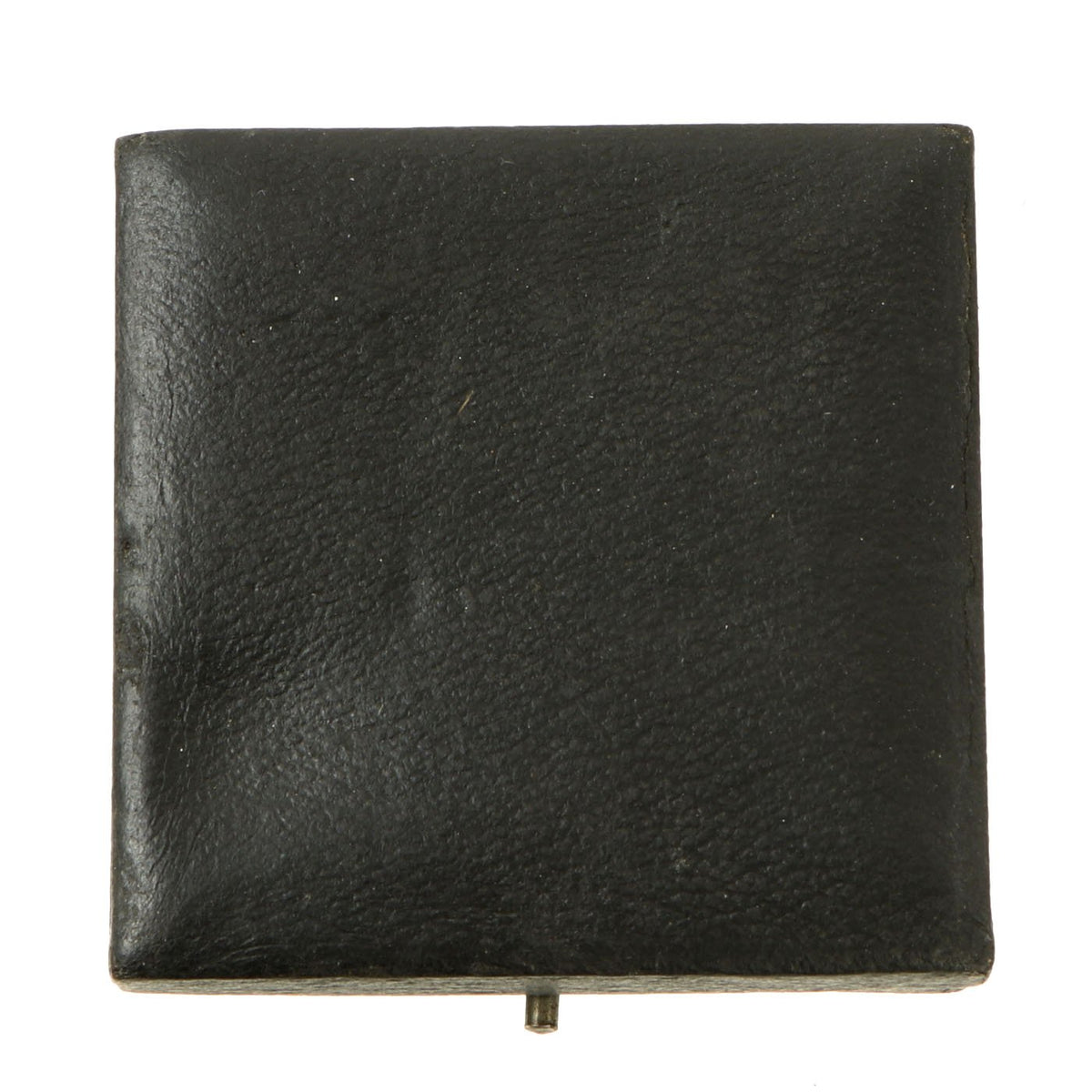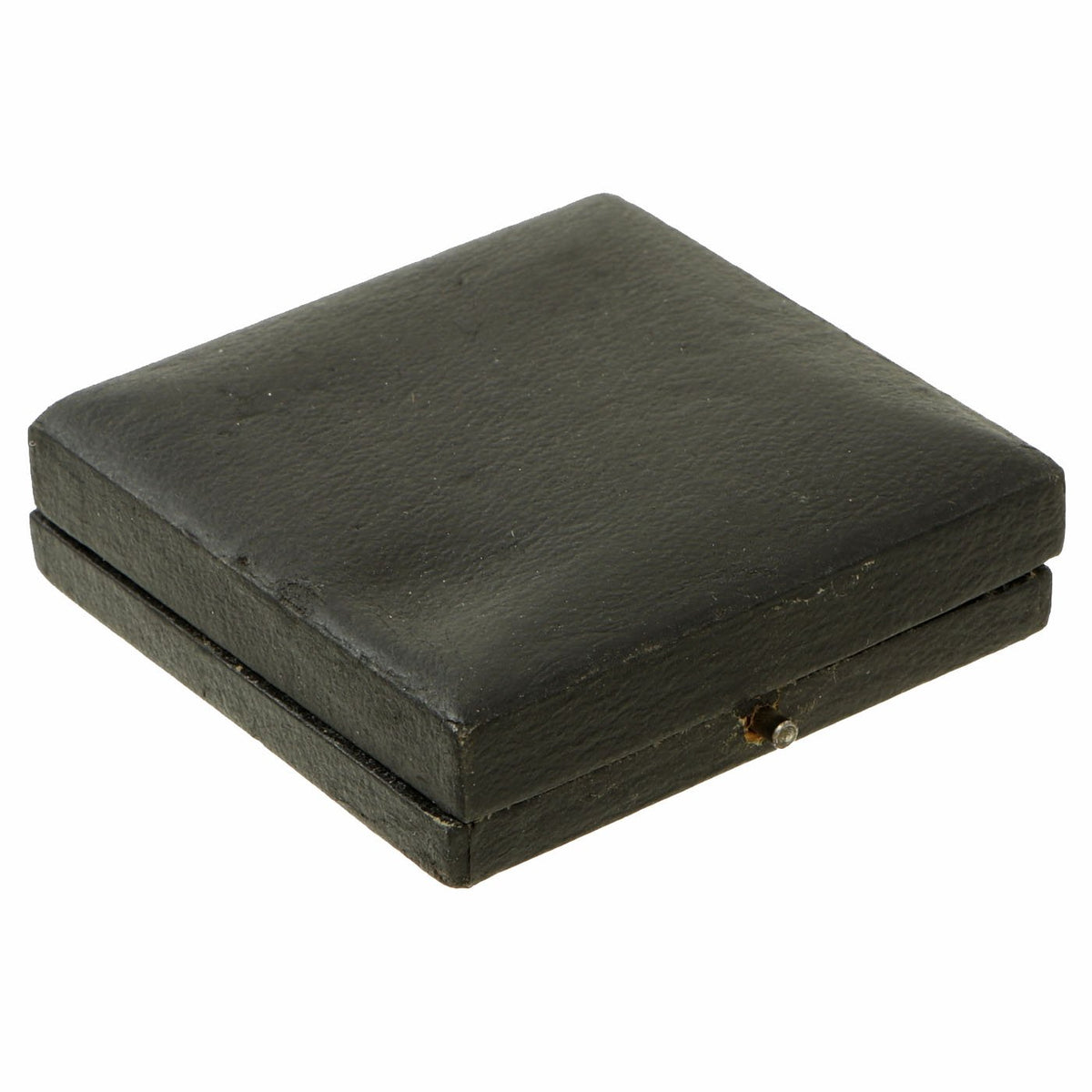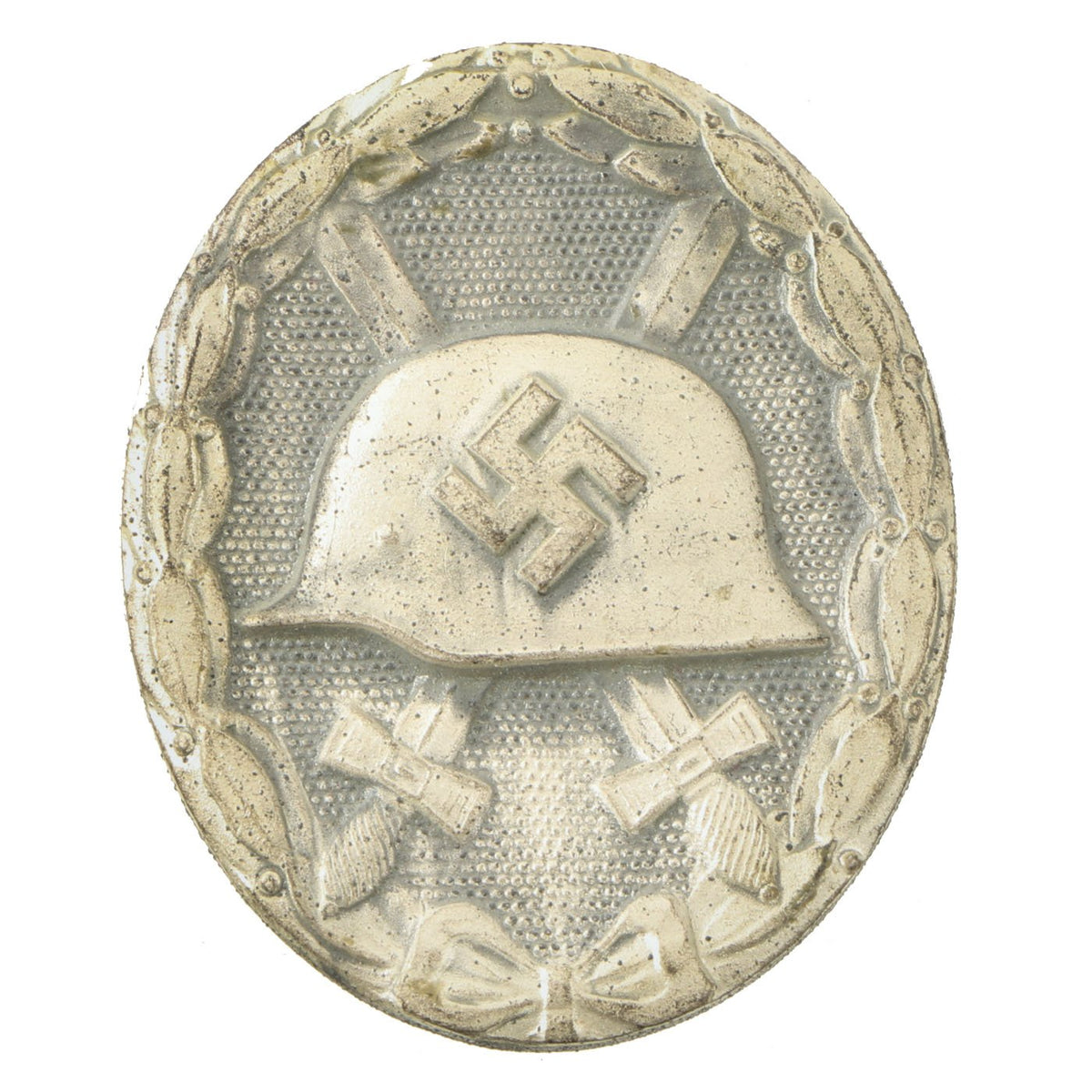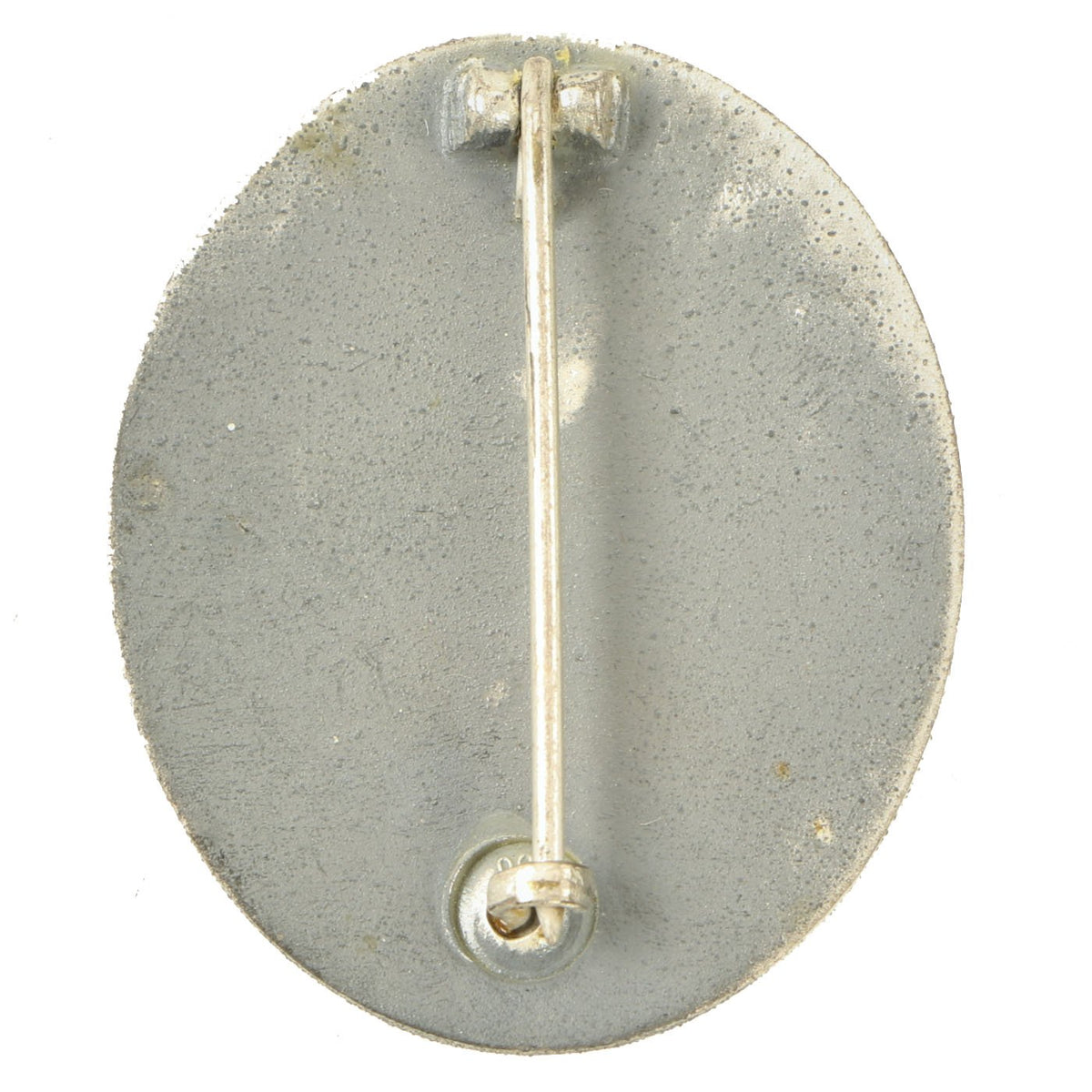Original German WWII Cased Solid Back Silver Wound Badge by Rudolf Wächtler & Lange of Mittweida Original Items
$ 350,00 $ 105,00
Original Item: Only One Available. This is an excellent maker marked and cased silver wound badge by Rudolf Wächtler & Lange of Mittweida. The badge itself is constructed out of a die struck, zinc-alloy base that has been silver washed. The oval badge depicts an embossed profile of a mobile Swas, above an M35 pattern helmet, which is above two crossed broad swords. This then lies on a pebbled field and is surrounded by a laurel leaf and berry wreath which is tied together at the bottom with a bow tie.
The reverse features a solid back and is maker marked with Präsidialkanzlei des Führers Lieferant (Presidential Chancellery Supplier) number 100 on the pin catch (very tiny), which represents maker Rudolf Wächtler & Lange of Mittweida in Saxony, Germany.
The pin, cast hinge and pressed in catch are all intact and in well-working condition. The silver wash on this example is quite good, with more than 75% of the front intact. Most of these badges over time completely lose the wash and turn gray. The back is missing most of the wash, and may have been left bare when produced. We had another example from this maker, and the back was mostly gray as well, and part of the front. This seems to be a typical. age pattern for this specific maker. The badge measures 1.75 inches high by 1.5 inches wide, and is in very good condition.
The included case box is the standard type, with a white satin and velvet interior. The case has a brass hinge on the back, which is still intact and fully functional. There is some staining to the interior, and the top is somewhat deformed, so it looks to have gotten wet at some point.
A very nice example, ready to add to your collection!
The German Wound Badge (Verwundetenabzeichen) was instituted during the First World War to recognize those wounded in the conflict. It was designed using a World War One style Imperial German helmet as the main motif. The helmet was set on top two crossed swords against a pebbled background and surrounded by a laurel leaves wreath.
During the Spanish Civil War the Third Reich reinstated the Wound Badge for a short period to honor those who were wounded during the conflict from 1936 to 1939. These German units participating in the assistance of the Spanish Fascists were deemed the “Condor Legion”. The pattern of the World War One Wound Badge was again used, except this time with a raised swas on the center of the World War One era helmet.
At the outbreak of war in September 1939 with Poland, Adolf AH once again reinstated the Wound Badge Award. Again the pattern of the badge was similar to that of the earlier style except the new design was freshened up a bit by using an M35 pattern German helmet and a slightly softer looking wreath. This pattern was used until the end of the war in 1945. It is impossible to know the exact numbers of wound badges awarded during the course of the Second World War due to the vast scale and countless individuals who were wounded or killed in the conflict.
The Wound Badge Awards came in three different types of grades representing the amount , or severity, of wounds received. The first grade, the Black Wound Badge was awarded for 1 to 2 wounds received in combat. The Silver Grade was awarded for 3 to 4 wounds, and finally the Gold Grade for 5 or more wounds, total disability, or death.
Fast Shipping with Professional Packaging
Thanks to our longstanding association with UPS FedEx DHL, and other major international carriers, we are able to provide a range of shipping options. Our warehouse staff is expertly trained and will wrap your products according to our exact and precise specifications. Prior to shipping, your goods will be thoroughly examined and securely secured. We ship to thousands clients each day across multiple countries. This shows how we're dedicated to be the largest retailer on the internet. Warehouses and distribution centres can be located throughout Europe as well as the USA.
Note: Orders with more than one item will be assigned a processing date depending on the item.
Before shipping before shipping, we'll conduct a thorough inspection of the items you have ordered. Today, the majority of orders will be delivered within 48 hours. The delivery time will be between 3-7 days.
Returns
The stock is dynamic and we cannot completely manage it because multiple stakeholders are involved, including our factory and warehouse. So the actual stock may alter at any time. It's possible that you may not receive your order once the order has been made.
Our policy is valid for a period of 30 days. If you don't receive the product within 30 days, we are not able to issue a refund or an exchange.
You can only return an item if it is unused and in the same state as the day you received it. You must have the item in its original packaging.
Related products
Uncategorized
Uncategorized
Uncategorized
Uncategorized
Angolan Rebel 1970s era 60mm Inert Display Mortar from Angolan Civil War Original Items
Uncategorized
Uncategorized
Uncategorized
Uncategorized
Uncategorized
Uncategorized
Uncategorized
Uncategorized
Uncategorized
Uncategorized
Uncategorized
Uncategorized
Uncategorized
Armored Burgonet Helmet & Polearm from Scottish Castle Leith Hall Circa 1700 Original Items
